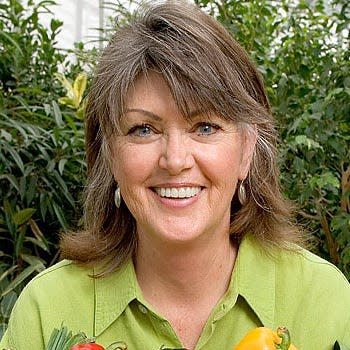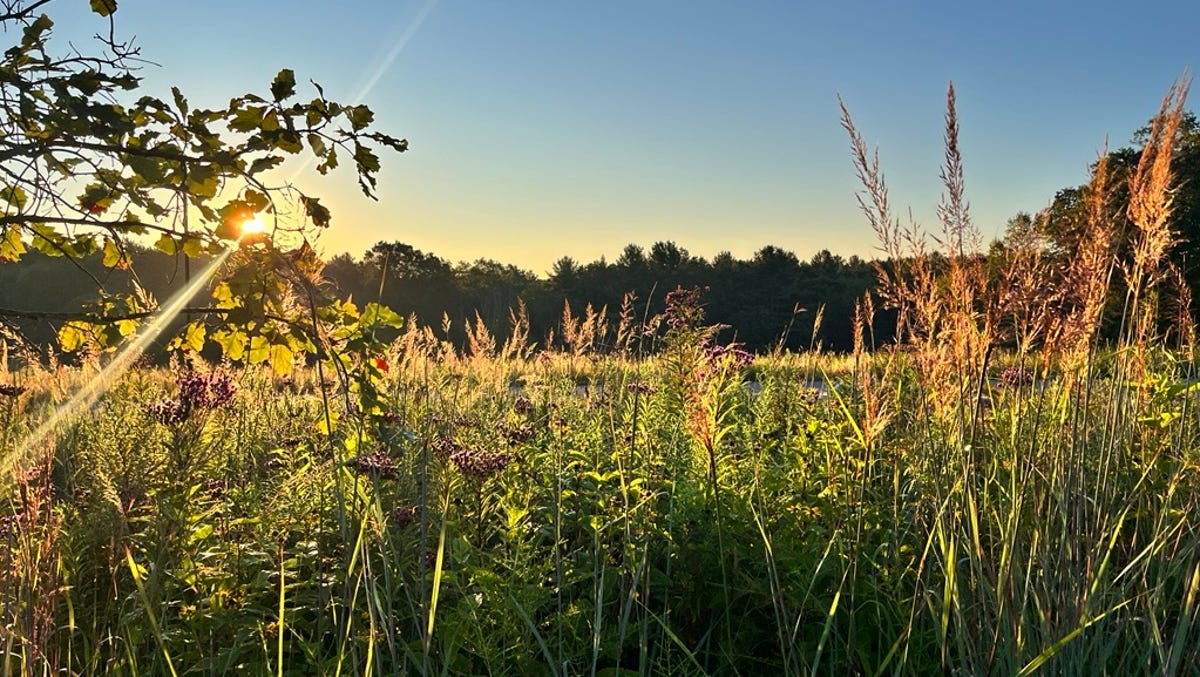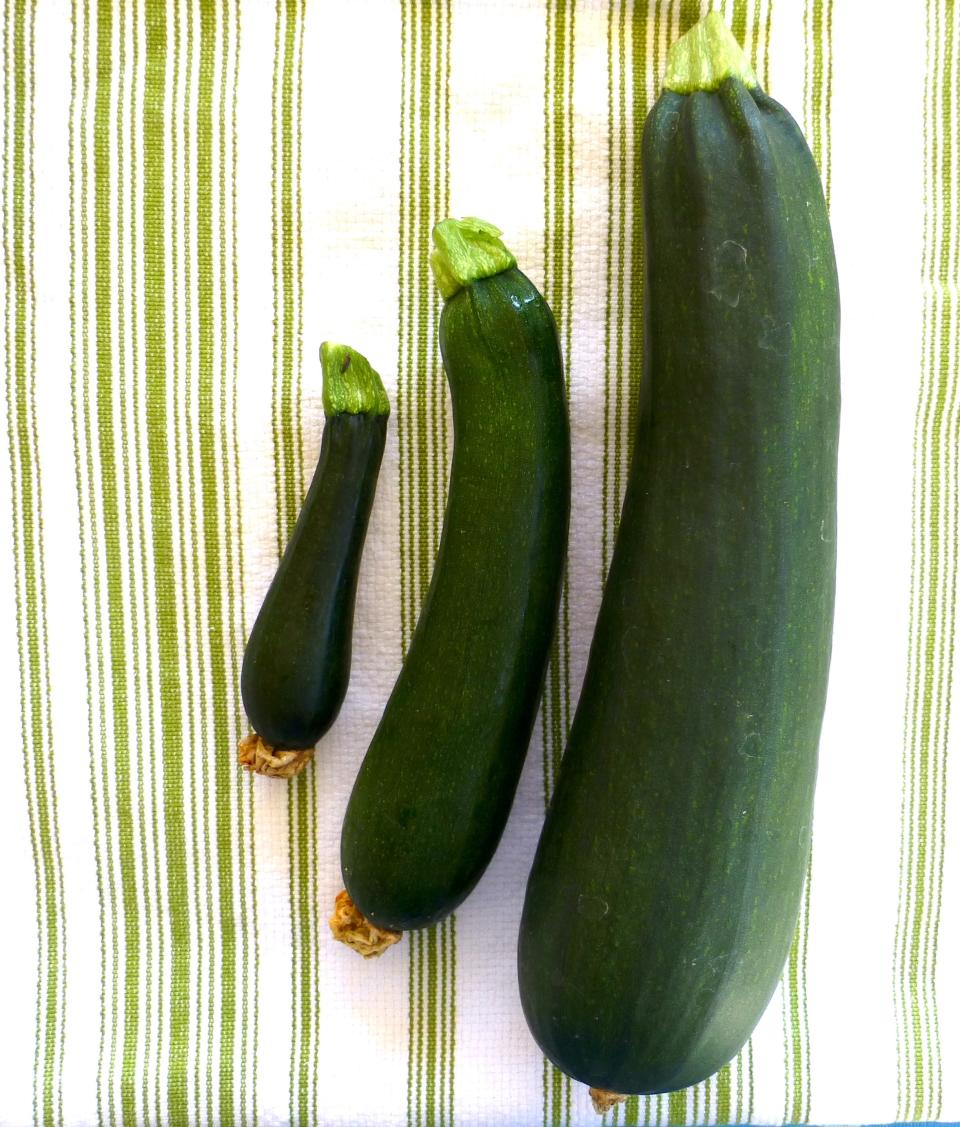A distinct advantage of gardening is that vegetables can be picked at any stage. It is up to the gardener when they want to harvest. Take zucchini for example.
Of the three zucchini squash in the accompanying picture, which is best? Well, it totally depends on how the zucchini would be used – is it to be consumed whole, sliced or chopped into pieces, grated, folded into a batter for bread or as a soup ingredient?
Is the largest squash the best? If it is destined to be grated into yummy zucchini bread, then yes, the largest squash may be best; but, if the largest is to be sliced and sautéed, results would be quite disappointing because skin of the largest is tough.
How about the smallest? If the goal of the gardener is for highest yield, then the smallest squash would have been harvested several days too soon – but, if the goal of the gardener was to harvest a baby squash for use as a gourmet vegetable, then the smallest zucchini is the best, especially since it is rare to find a gourmet vegetable in the grocer.
For most uses, and the size found in the grocer, the center zucchini is the squash of choice. It has reached market size, is at the stage for optimum fresh consumption.
The optimum size for harvesting zucchini and other summer squash is 6 to 8 inches in length. At this stage of maturity, the skin can be easily punctured with a fingernail, is bright and glistens, is smooth, and firm but not tough. The seed cavity is moist and small; seeds are thin, soft, and not fully developed. Summer squash at this stage are the most flavorful.

Summer squash that is allowed to mature on the vine continues to grow in length well in girth. Skin of mature fruit hardens and dulls as it loses its luster. The seed cavity enlarges and loses moisture as seeds mature; seed will be hard. Eventually the fruit loses chlorophyll, turning yellow or orange. Gardeners wishing to save seed for next year will allow fruit to mature on the vine, however, it becomes inedible.
A little about summer squash purchased at grocery stores. How is it that the squash are always almost perfect, uniform in size, color, and texture? The United States Department of Agriculture sets standards vegetables must meet to qualify for market grades U.S. No.1, No. 2, or Unclassified.
U.S. No. 1 specifications: stems attached, young and fairly tender fruit, well formed, firm, free of defect without cuts, bruises, dirt, disease, insect, mechanical damage; while U.S. No. 2 squash is not as pretty, with percentage tolerances allowing flaws. Produce sold at farmer’s markets are not graded. U.S. No. 1 is the grade sold in grocery stores.
Fresh vegetable specification details can be found at ams.usda.gov/standards.
Ellen Peffley taught horticulture at the college level for 28 years, 25 of those at Texas Tech, during which time she developed two onion varieties. She is now the sole proprietor of From the Garden, a market garden farmette. You can email her at [email protected]
This article originally appeared on Lubbock Avalanche-Journal: Gardening for You: Is bigger always better?









